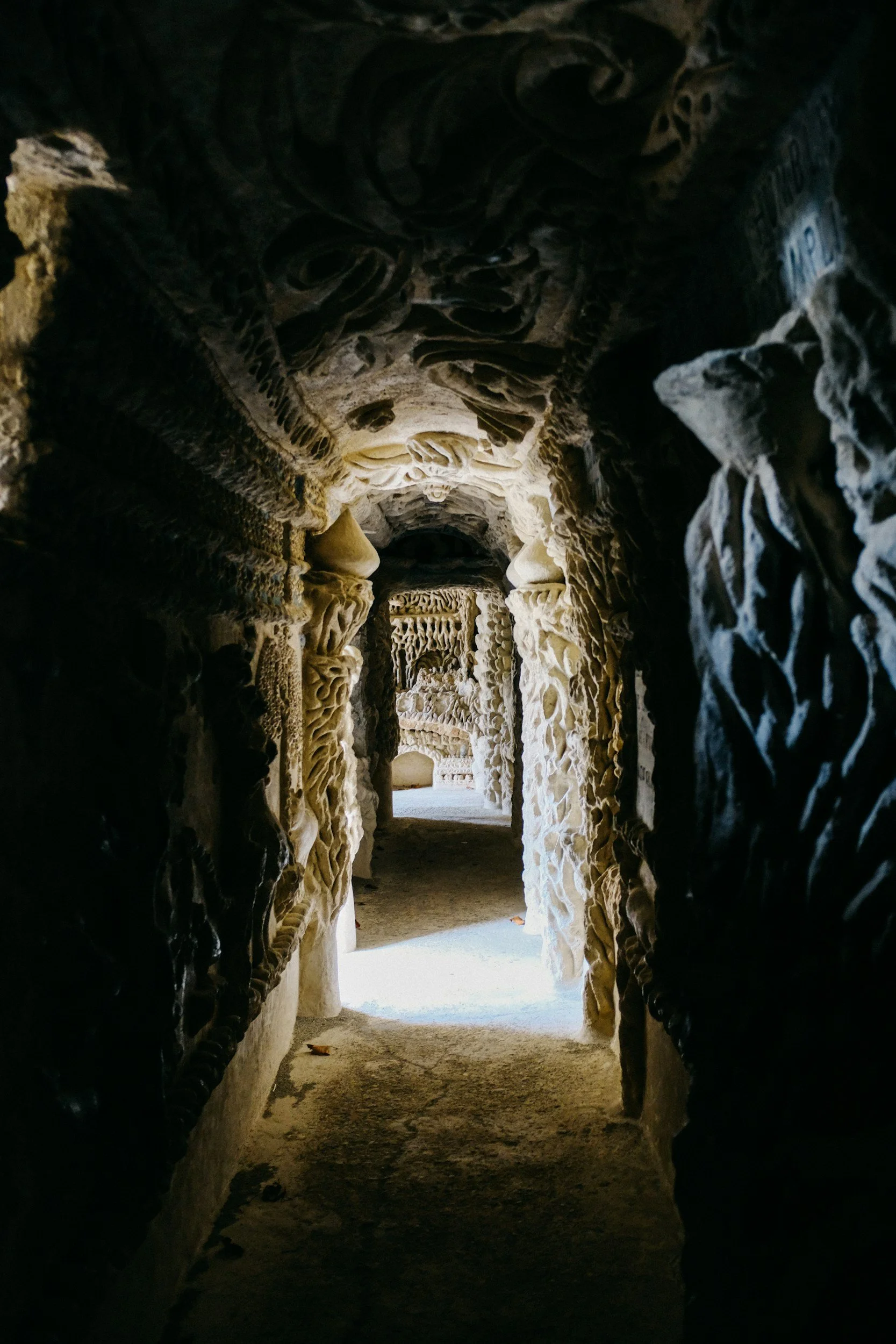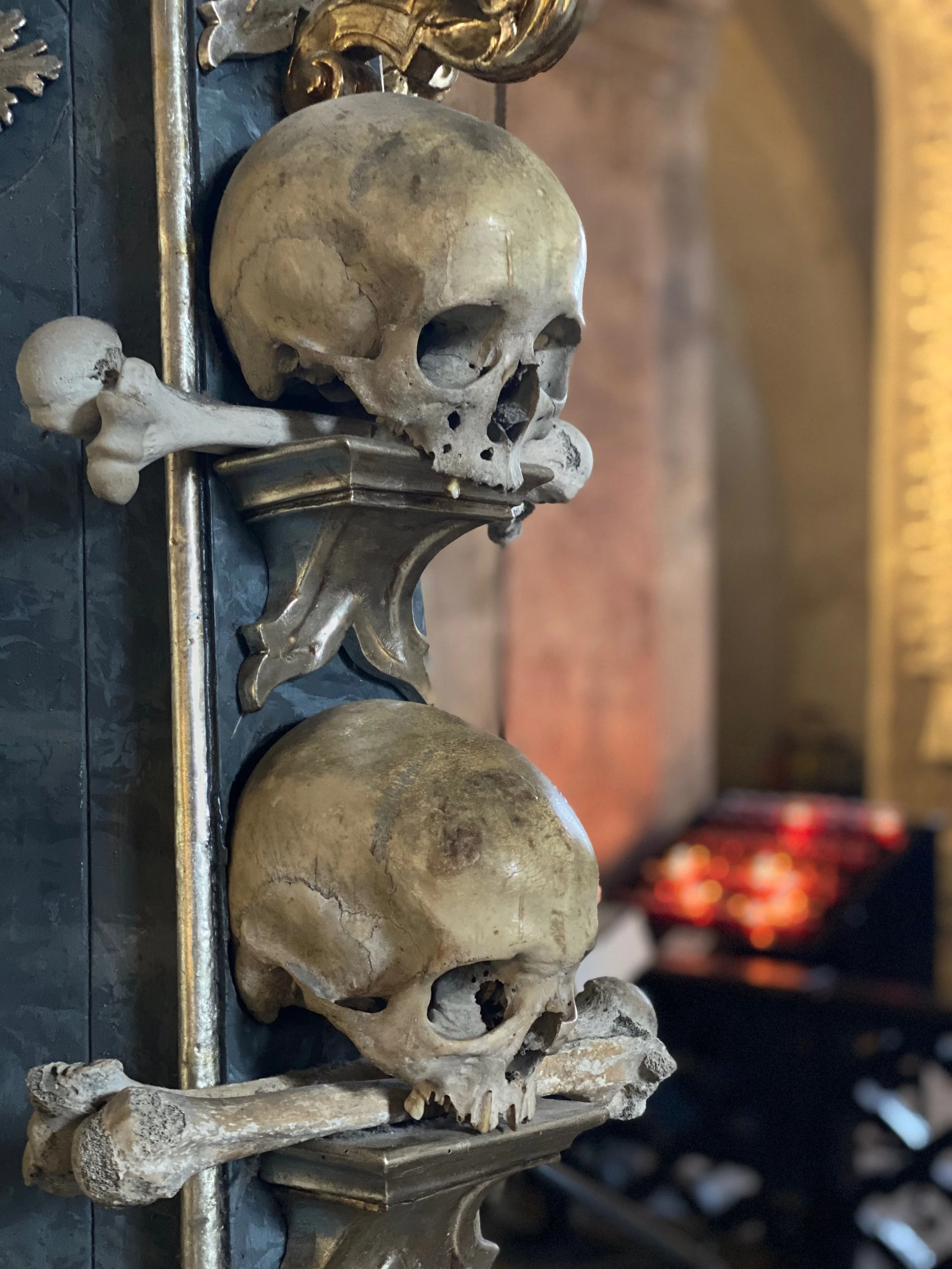Curious About Death Tourism?
Death tourism—also known as dark tourism or thanatourism—is travel centered around places historically or culturally associated with death, tragedy, or the macabre. People are drawn to these destinations for various reasons, including curiosity, history, education, and spiritual reflection.
Some Top Death Destinations to Visit
Catacombs of Paris, France
Visitors per year: ~500,000
Underground ossuary holding the remains of over 6 million people.
Over 200 miles of dark, winding tunnels lined with skulls and bones. Bones are arranged in decorative patterns—walls of femurs and skulls line the tunnels.
Originally built to deal with the city's overflowing cemeteries in the late 18th century. An elegant solution, as they used what were originally limestone quarries before being repurposed. This remains an issue that land-constrained cities face and is something we want to tackle later to discuss how cities are addressing this problem.
Sedlec Ossuary, Czech Republic
Visitors per year: ~200,000
Also known as the "Bone Church," A small Roman Catholic chapel decorated with the bones of an estimated 40,000 to 70,000 people, many victims of the Black Death and the Hussite Wars.
Decorated entirely with human bones in artistic arrangements. The interior features chandeliers, coats of arms, and altarpieces—all crafted from human bones. The chandelier consists of at least one of every bone in the human body.
A half-blind monk is said to have started stacking bones artistically in the 16th century.
Check out some travel photos from our previous visit to the "Bone Church" on our website and past blog posts.
Pompeii, Italy
Visitors per year: ~3.5 million
Now a UNESCO World Heritage Site, this is an ancient Roman city frozen in time by the eruption of Mount Vesuvius in 79 AD, which buried the city under ash and preserved it for centuries.
The lava perfectly preserved human victims as they were at the exact moment they died, covering faces, clutching loved ones.
Rediscovered in the 18th century, it is now one of the world's best-preserved archaeological sites.
Why Do People Visit These Places?
Confronting mortality: Many travelers are drawn to these sites to reflect on their own lives and the impermanence of existence.
Historical context: These locations offer visceral connections to pivotal events that have shaped history—plagues, wars, disasters, and shifting belief systems.
Spiritual or emotional processing: Grief travelers or those who've experienced loss sometimes seek out these spaces for meaning or catharsis.
Dark curiosity: Some just want to feel the chills or say they've been somewhere "haunted" or morbid.
The Ethics of Death Tourism
There's an ongoing debate: Are visitors honoring the dead or turning tragedy into entertainment? It is essential to practice responsible tourism when exploring these types of sites. What does being responsible mean? Going with respect, learning the context, and supporting preservation efforts.



